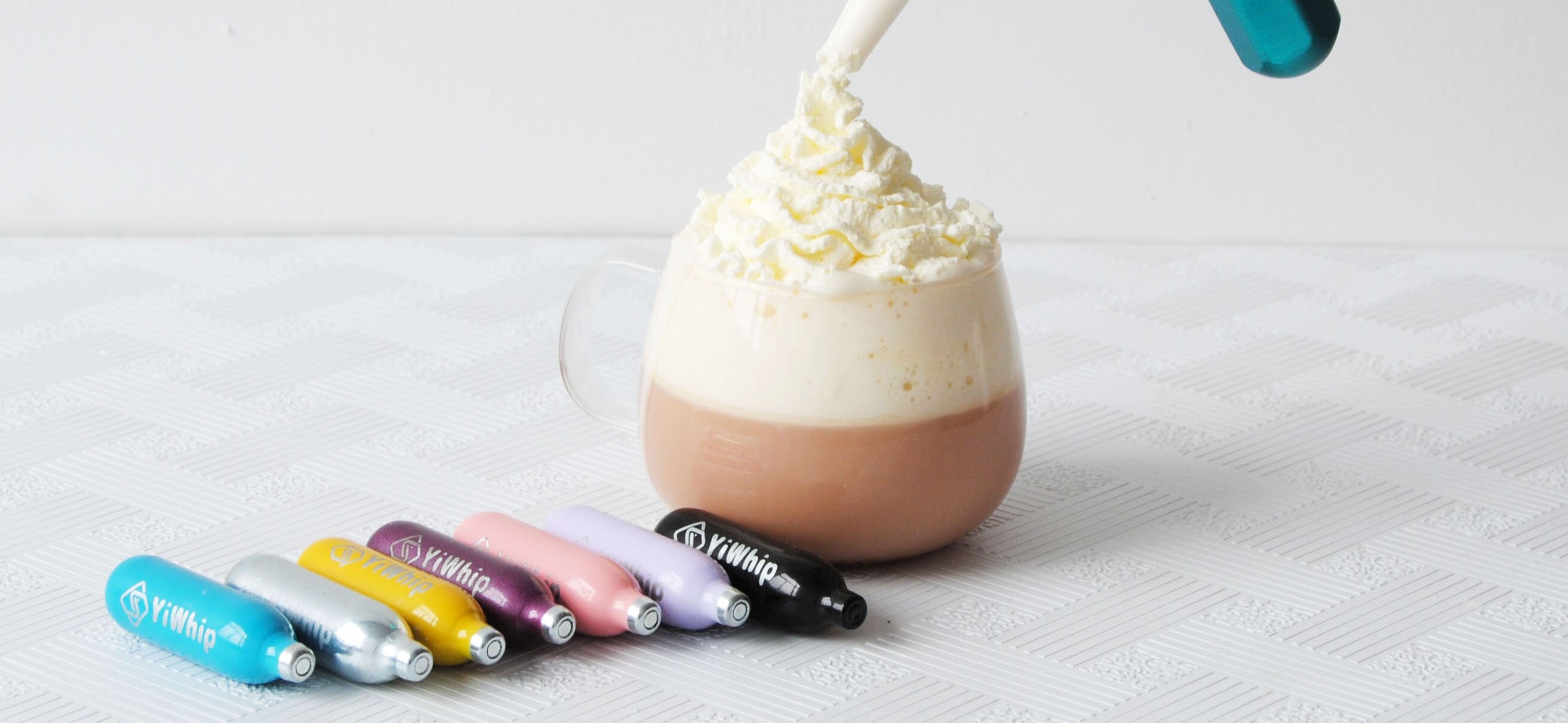If you're an aspiring home chef, a passionate dessert lover, or even a coffee connoisseur in the United States, chances are you’ve come across the magic that Nitrous Oxide (N2O) whipped cream chargers bring to culinary creations. These small canisters might seem unassuming, but they’re powerful tools for making perfectly textured cream at the push of a button — no shaking or mixing required.
What Exactly Are Whipped Cream Chargers?
Whipped cream chargers, often referred to as N2O cartridges or nitro whips, are small pressurized canisters containing food-grade Nitrous Oxide gas. These cartridges are used inside handheld dispensers — known as siphons — where they inject gas into liquid whipping cream to aerate and thicken it instantly into a stable, airy whipped cream.
The process is fast, clean, and efficient compared to manually whipping cream. Plus, with their compact size and simple use, N2O charges have become essential in kitchens all over America—especially where gourmet desserts are concerned!
Why Americans Love Using N2O Chargers in the Kitchen
Over recent years, chefs and casual cooks alike in the US have embraced modern cooking techniques involving N2O chargers for various applications beyond traditional whipped cream:
- Mousses and foams
- Chef-style sauces and purées
- Cold espresso foam toppings
- Air-whipping oils, creams, batters, and more
Bartenders and cafés also find these chargers invaluable, especially when crafting lattes with a perfect layer of milk foam or adding artistic textures to desserts and cocktails. Their ability to stabilize emulsifications quickly makes them ideal for professional-grade presentation from everyday settings — not just top-rated urban cafes anymore!
Selecting Your Ideal N2O Charger and Dispenser Set-Up
To choose the best N2O charging setup for your needs in the US market, you must take note of several factors:
1. Compatibility between dispenser type and charger model: The most common N2O chargers come in sizes labeled as 8g disposable cartridges. These standard sizes fit nearly all major brands like iSi and ISI ProLine. Be cautious when opting for alternative models — compatibility varies, especially among cheaper imports. 2. Material & Quality Assurance: Make sure both charger capsules and the dispenser chamber carry certifications approved by the USDA and FDA, particularly if intended for food usage indoors — a crucial point given health compliance requirements under US laws. Avoid industrial-stamped non-FoodSafe certified products which could leach metal traces. 3. Safety Standards: U.S consumers prioritize safety features due to stricter regulatory environments compared to Europe or Asian markets. Opt for manufacturers adhering to ASTM F8-88 and CGA protocols which ensure structural integrity, leak-resistant construction, and explosion-proof pressure ratings tested per industry-standard tolerances. 4. Price vs Usage Efficiency Ratios: While many entry-level kits retail under $25 including a few starter cartridges, heavy kitchen users benefit from wholesale buying bulk 24ct or 50ct cartridge packages priced below a dollar per charge. Some retailers now even include refill stations and reusable chambers to reduce landfill contribution — reflecting green consumer trends sweeping cities from California to Brooklyn and Austin.Frequently Asked Questions About Cream Chargers
Here’s what some American cooks are typically curious about before diving into cream chargers full-force:
Are N2O Chargers Legal to Buy and Own Across the US?
In short — absolutely YES…as long as intended strictly for food use! In many states — New York City especially has taken strong measures—laws were updated around recreational "nos" abuses seen at house raves and college gatherings. Possession and consumption without culinary purposes in mind may result in legal consequences under age restriction clauses. So, purchasing online is fine through certified kitchen equipment vendors — Amazon.com and Williams-Sonoma included sell thousands yearly safely every month to adults aged 18+ upon checkout ID confirmation.
How Do You Dispose of Spent Chargers Safely?
All discharged N2O containers in the United States — even stainless alloy versions –must be recycled as scrap metal waste. Throwing into general bins poses pollution risks since residual gas may still release nitrogen oxide into local soil/watershed systems if punctured later accidentally. Many large chains like Bed Bath Beyond run annual recycling drives during Earth Weeks or partner up with TerraCycle-type services specialized in gas-container recycling infrastructure.
I've Noticed Flavor Changes — Any Reason Behind That?
Yes and sometimes it depends whether using ultra-pasteurized cream versus cold fresh dairy stock. Ultra-heat treated (UHT) bases tend to absorb more gas quicker causing faster whip buildup with marginally thinner final density. Try lowering total fat% down or adjust temperature closer to refrigerator chilled prior injection to preserve creamy mouthfeel better while reducing oxidation effects from direct contact oxygen residues present inside old or reused dispensers. Also make sure valves seal tightly—small leakages allow CO₂ infusion or moisture condensations leading subtle bitterness. Clean out after every session using a sterilizing wipe to maintain optimal performance levels over extended periods.
Safety, Storage & Shelf-life of Whipped Cream Chargers: A Final Thought
Your storage practices can significantly influence how well your nitrous oxide cartridges function long-term: • Always Keep Containers In Cool, Dry Places — Heat weakens internal canister walls and accelerates premature gas degradation within. • Child and Pet Access Restricted Area Recommended — Though harmless under correct operation, accidental ingestion or inhalation attempts cause dizziness and potential panic reactions requiring ER attention — particularly sensitive around children or household animals near stoves/kitchen cabinets frequently accessed during breakfast hours. • Track expiration Dates Closely (Typically printed near seal edges)

